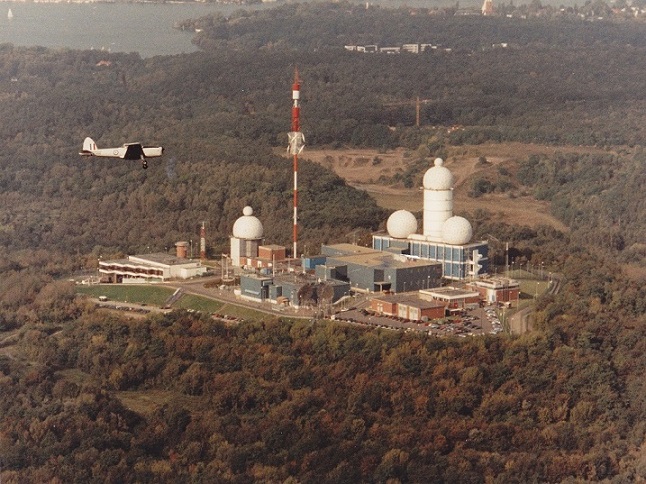
Teufelsberg Field Station Berlin: Circa 1985. Photograph courtesy of John Evans.
SEPTEMBER 2012 - 2015
TEUFELSBERG FIELD STATION BERLIN
Culminating in September 2015, Brendan
Jamison is currently working on a 3 year research project on Teufelsberg Field Station Berlin, the Cold War listening
station built on an artificial hill in the Grunewald forest.
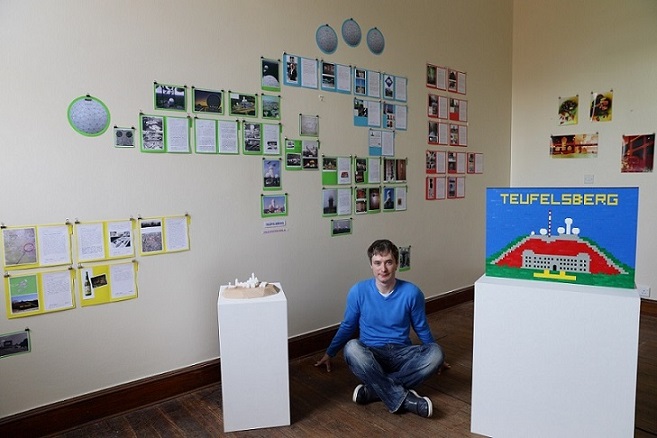
Artist Brendan Jamison in front of his INTELLIGENCE REPORTS, arranged in the aerial shape of Field Station Berlin. Each set of colour-coded files cover a different time-period in the history of this site. Photography © Tony Corey for Jamison Sculpture Studio.
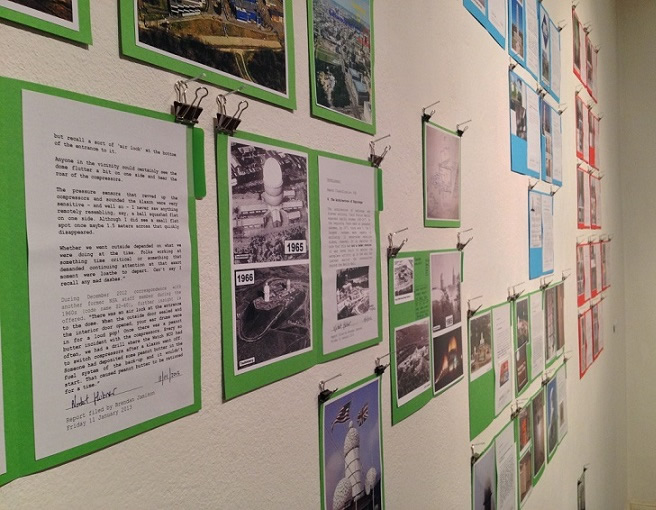
Detail of Brendan Jamison's INTELLIGENCE REPORTS, arranged in the aerial shape of Field Station Berlin. Each set of colour-coded files cover a different time-period in the history of this site. WerkStadt Gallery, Berlin. September 2013.
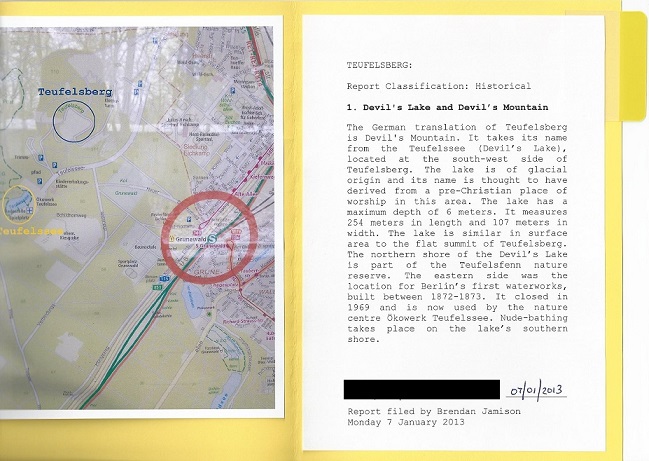
Report 1 of 30. Brendan Jamison's INTELLIGENCE REPORTS at WerkStadt Gallery, Berlin. September 2013.
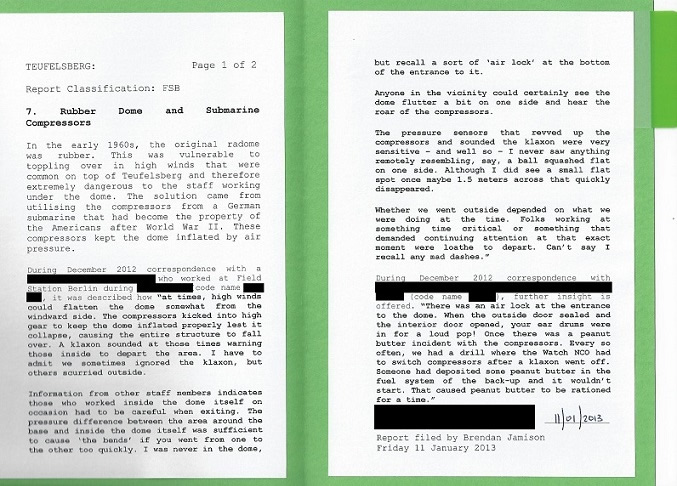
Report 7 of 30. Brendan Jamison's INTELLIGENCE REPORTS at WerkStadt Gallery, Berlin. September 2013.
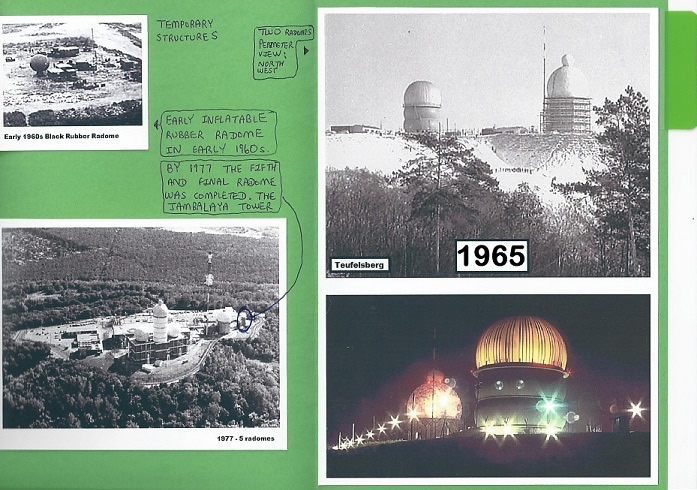
Report 8b of 30. Brendan Jamison's INTELLIGENCE REPORTS at WerkStadt Gallery, Berlin. September 2013.
The layers of this unique site reveal the
history of Berlin throughout the most tumultuous events of the 20th Century. To understand the sheer scope of this story, we need to rewind to a period long before the spy station was built, even before the hill of Teufelsberg existed.
In the 1930s, this entire area was completely flat. Under National Socialism, the Northern tip of the Grunewald was subject to mass-demolition, clearing many public buildings and over 50,000 apartments, with a large section occupied by Jews. Secret plans were developed by chief architect Albert Speer (1905-1981) to
create a new Technical University at this location. It was to be realized on such an expansive scale that it would appear like a small city in itself. The construction site sparked rumours among the locals and ideas of an underground submarine base began to emerge. In reality, it would seem this spectacle was merely the foundations and underground bunker for the first building. On 27 November 1937, Adolf Hitler (1889-1945) delivered a speech as he laid
the foundation stone for the Faculty of Defense Technology. It was a large imposing fortress-style erection, designed by Hans Malwitz (1891-1987). By
1940, resources were shifted elsewhere and the remainder of the Technical University was unrealized. The uncompleted Faculty of Defense Technology became an ammunition storage facility during the war.
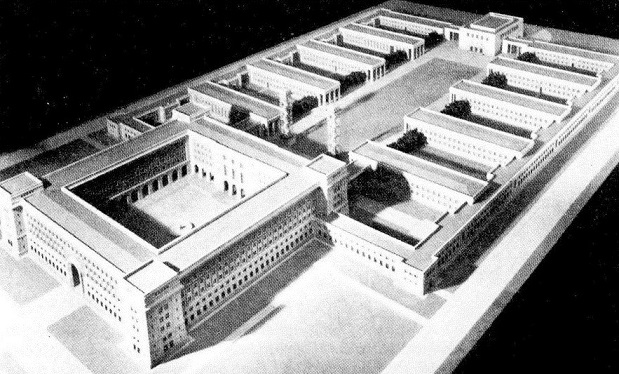
Model of the Technical University: Faculty of Defense Technology
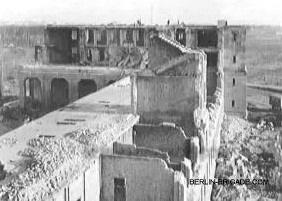 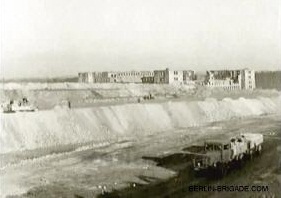
After the Second World War. Faculty of Defense Technology. Photography: BerlinBrigade.com
After the Second World War, the city of Berlin lay in ruins. Over the course of several decades, a fleet of trucks drove rubble to this location and poured it on top of the Faculty
building. The thick fortress-like walls provided the perfect foundation for a
rubble hill. The artificial mound continued to grow and reached a height of 115
meters. It was given the name Teufelsberg (translated
as Devil's Mountain) due to its location beside the lake, Teufelssee.

TEUFELSBERG CROSS-SECTION (2013) Brendan Jamison, coloured plastic blocks, 50 x 67 x 2 cms. Photography: © Tony Corey for Jamison Sculpture Studio.
Blue |
Sky |
White |
Radomes at the Listening Station |
Green |
Grunewald Forest |
Red |
Bricks and rubble from bombed buildings of World War Two |
Grey |
The buried Faculty of Defense Technology |
Yellow |
Underground bunker for Faculty of Defense Technology |
BILLBOARD: TEUFELSBERG CROSS-SECTION (2013) Brendan Jamison, billboard, 250 x 500 cms. Art in the Eastside, Belfast, Northern Ireland. September 2013. Photography: Bronagh Lawson.
On 13 August 1961 the Berlin Wall was erected. The city was now divided in two. West Berlin had become isolated, existing like a tiny island in the middle of East Germany. Although spy operations were occurring throughout the 1950s, suddenly with the dividing wall, espionage became elevated to a new level of importance. American and British spies sought to intercept conversations and codes transmitted by Communists in the Eastern world.
The US Army Security Agency (ASA) built listening stations for Field Station Berlin (FSB) at:
Site 1: Rudow - 1950s.
Site 2: Tempelhof Airport - 1955-1966. Located on the top floor with a plywood box-shaped hut to conceal the antennas. Espionage operations were conducted from the East Tower by the 280th ASA Company. The missions still remain classified.
Site 3: Teufelsberg - from as early as 1960, mobile units were positioned on the summit. This site was shared with British Intelligence as it was located in the British Sector of West Berlin.
Site 4: Jagen 87 - A rectangular section of the Grunewald. Morse code was intercepted here.
Andrews Barracks (Lichterfelde) was the location of the Field Station Berlin Headquarters. A giant radome was built in the car park.
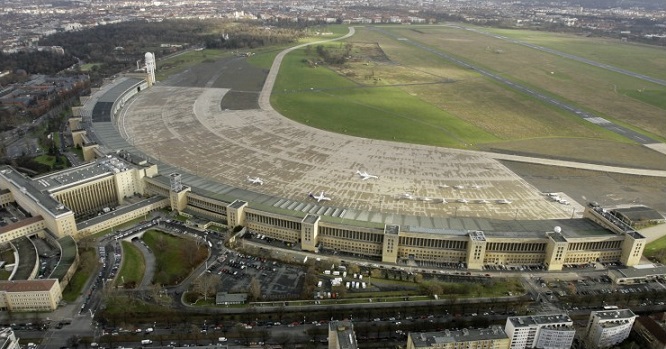
Site 2: Tempelhof Airport
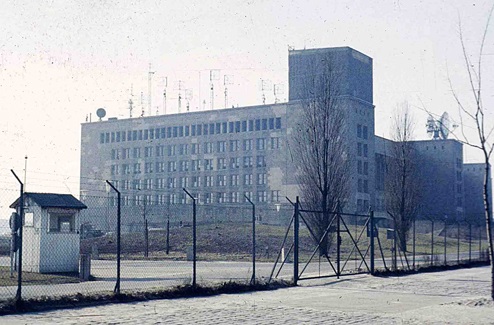
Site 2: Tempelhof Airport East Tower with wooden construction on roof

Circa 1965: In the foreground, Site 4 (Jagen 87). In the background, Site 3 (Teufelsberg).
The mobile units at the summit of Teufelsberg were extremely effective. And therefore, in October 1963, permanent structures were built on the hill top. As the highest unobstructed point in West Berlin, signals could be intercepted across East Germany and beyond. Teufelsberg effectively listened to communications by the Stasi, the East German Government (SED), the Soviet Armed Forces and many more... Unsurprisingly, operations at sites 1,2, and 4 became absorbed into Teufelsberg. And so the field station expanded. In fact, from 1963 to 1991, the architecture of espionage was forever evolving, in the beginning there was only an inflatable rubber radome, but by 1972 there were four giant geodesic domes. A replacement radome was added to the small Jambalaya Tower as late as 1989.
 LEFT: TEUFELSBERG CROSS-SECTION (2013) Brendan Jamison, coloured plastic blocks, 50 x 67 x 2 cms. RIGHT: AERIAL PERSPECTIVE OF TEUFELSBERG FIELD STATION BERLIN (2013) Brendan Jamison, coloured plastic blocks, 50 x 78 x 2 cms. Microdot Gallery, Belfast, Northern Ireland. Photography: © Jamison Sculpture Studio LEFT: TEUFELSBERG CROSS-SECTION (2013) Brendan Jamison, coloured plastic blocks, 50 x 67 x 2 cms. RIGHT: AERIAL PERSPECTIVE OF TEUFELSBERG FIELD STATION BERLIN (2013) Brendan Jamison, coloured plastic blocks, 50 x 78 x 2 cms. Microdot Gallery, Belfast, Northern Ireland. Photography: © Jamison Sculpture Studio
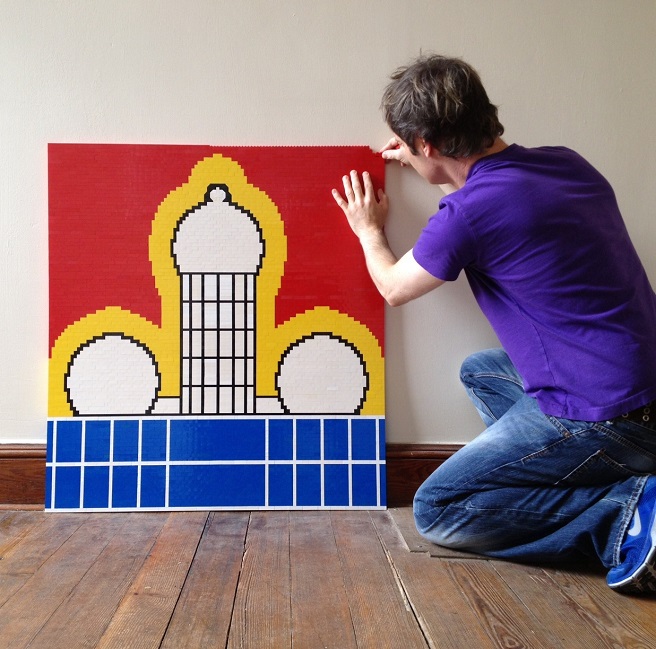
ARTIST BRENDAN JAMISON COMPLETING CROSS-SECTION OF TRIPLE RADOME BUILDING AT TEUFELSBERG FIELD STATION BERLIN (2013) Coloured plastic blocks. 95 x 87 x 2 cms. Photography: © Jamison Sculpture Studio
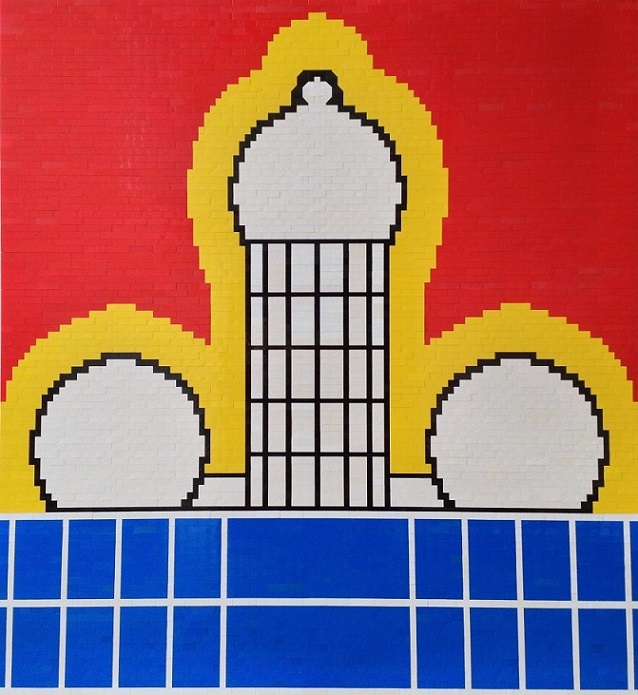
CROSS-SECTION OF TRIPLE RADOME BUILDING AT TEUFELSBERG FIELD STATION BERLIN (2013) Coloured plastic blocks. 95 x 87 x 2 cms. Photography: © Jamison Sculpture Studio
Following the end of the Cold War after the dissolution of the Soviet Union on 25 December 1991, the intelligence community vacated Teufelsberg in 1992. However, the work undertaken there remains classified. From the outset the field station was clouded in secrecy. Over the years, some of these mysteries have been revealed, whilst others have become mixed with myth and imagination...
Adopting a multi-disciplinary
approach, Jamison's project features drawing, collage, sculpture and photography. Employing a high visual impact, the Teufelsberg stories can be told in an enjoyable and accessible fashion, stimulating the audience from both a fine art and educational perspective. The
core of the research features 'intelligence reports' that Jamison has created
through detailed analysis of the spy station with regular field trips to the
site and extensive interviews with former intelligence
operatives.
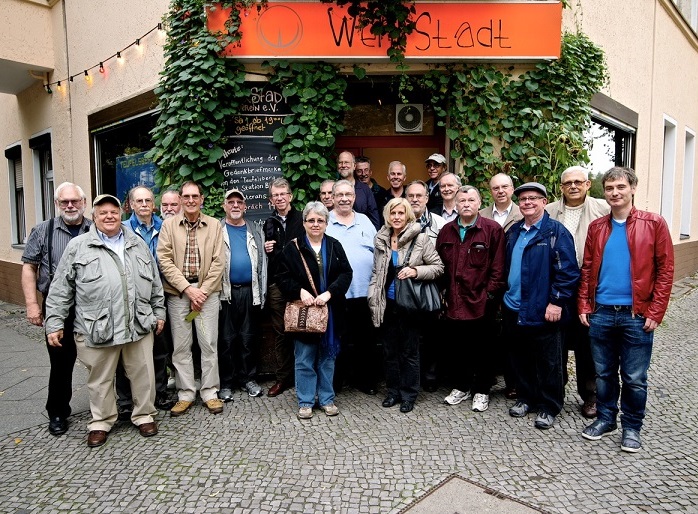
25 September 2013: Brendan Jamison (far left) at the WerkStadt Gallery with Teufelsberg veterans. Photography: Charles Yunck from B.Z. newspaper in Berlin.
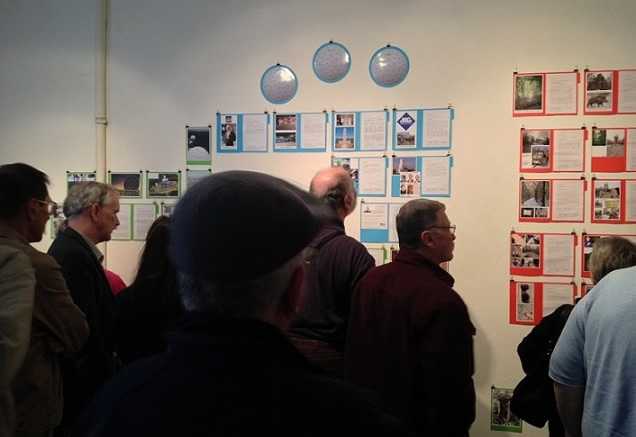
25 September 2013: Brendan Jamison's INTELLIGENCE REPORTS prove popular with veterans of Field Station Berlin as they read through the history from 1963-2013. WerkStadt Gallery.
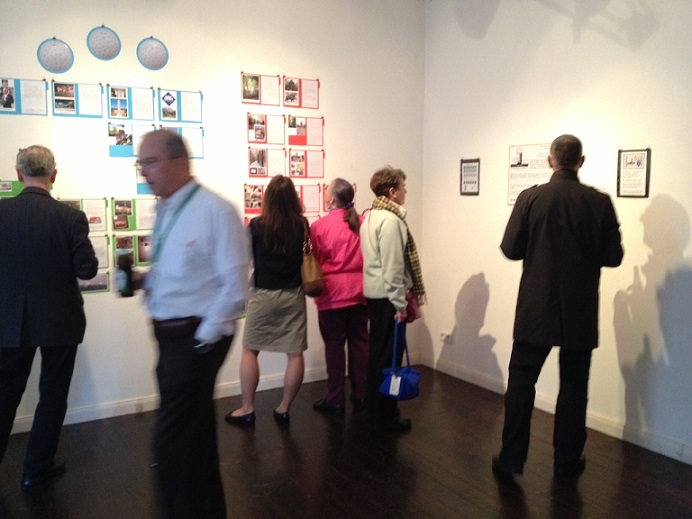
25 September 2013: Brendan Jamison's INTELLIGENCE REPORTS prove popular with veterans of Field Station Berlin as they read through the history from 1963-2013. WerkStadt Gallery.
Phase 1 culminated in an exhibition
at the WerkStadt Gallery, Berlin. It was linked with the Fiftieth
Anniversary reunion of Teufelsberg veterans who returned to Berlin during the last week of September. A special commemorative plaque and stamp was unveiled, both designed by T.H.E. Hill, a veteran who worked at Field Station Berlin from 1974-1977.
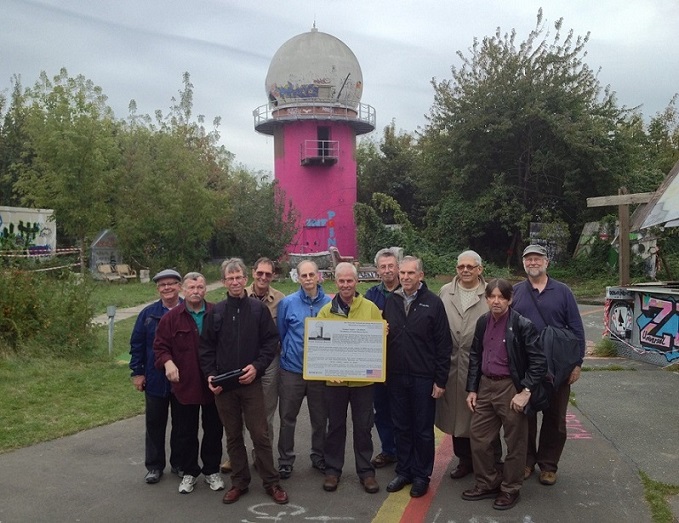
25 September 2013: Teufelsberg veterans return to Field Station Berlin to install a 50th Anniversary Plaque designed by T.H.E. Hill. Photography: Brendan Jamison.
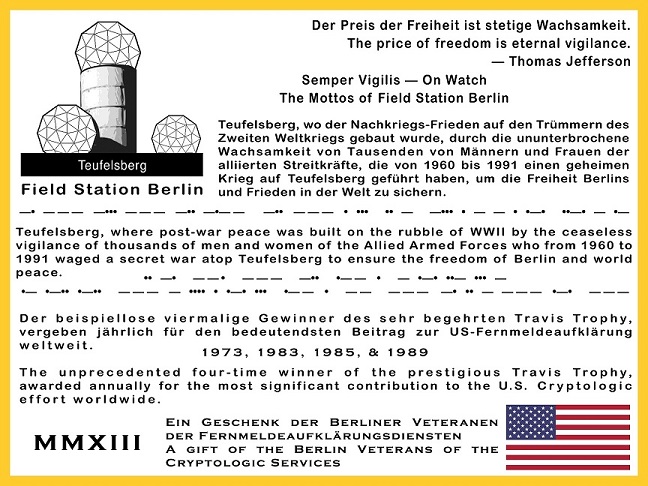
FIELD STATION BERLIN 50TH ANNIVERSARY PLAQUE (2013) T.H.E. Hill, 46 x 61 cms. To visit the artist's website 'Voices Under Berlin', please CLICK HERE
Jamison outlines how “this project cross-pollinates aesthetics with history, politics, geography, architecture, linguistics and the world of espionage. During this first year of research, over 50 former employees have provided wonderful accounts of life at Field Station Berlin. They have also helped with the dating of archive photographs and explained the mechanics of the Cold War technology."
Jamison's Teufelsberg exhibition was funded by the British Council and the Arts
Council of Northern Ireland.
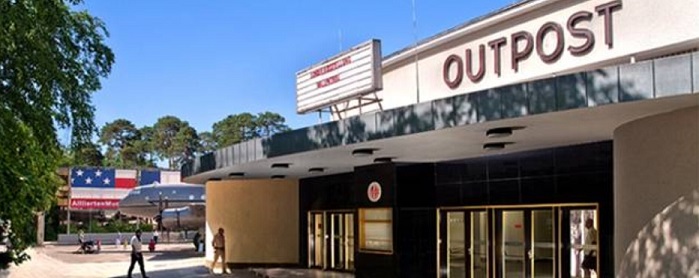
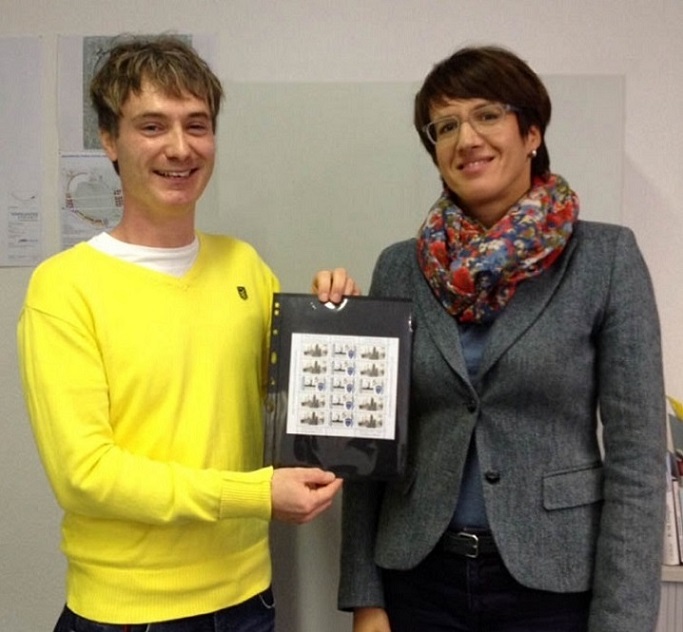
9 October 2013: Brendan Jamison presents the 50th Anniversary Teufelsberg Stamp to Dr. Gundula Bavendamm, Director of the Allied Museum, Berlin. Designed by T.H.E. Hill, a veteran who worked at Field Station Berlin from 1974-1977.
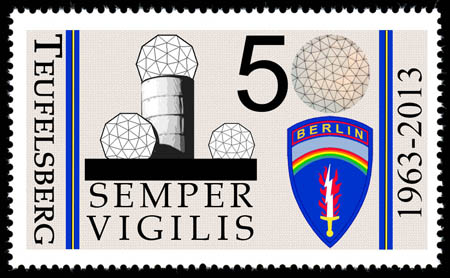
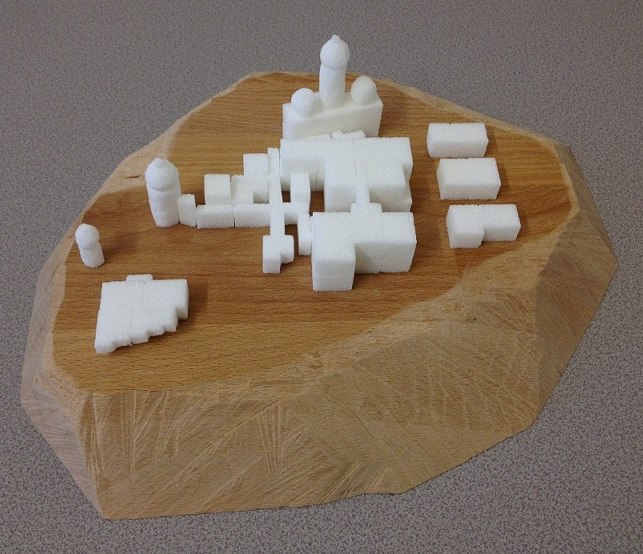
TEUFELSBERG FIELD STATION BERLIN (2013) Brendan Jamison, carved sugar cubes and carved beech wood, 9 x 30 x 27 cms. Photography: © Brendan Jamison
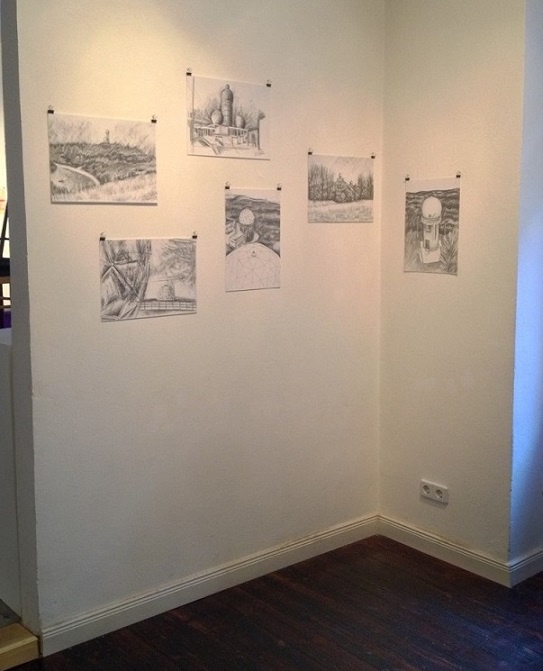
6 Drawings of Teufelsberg. Brendan Jamison and Ciaran Magill,
pencil on card, 42 x 59 cms each. WerkStadt Gallery, Berlin.
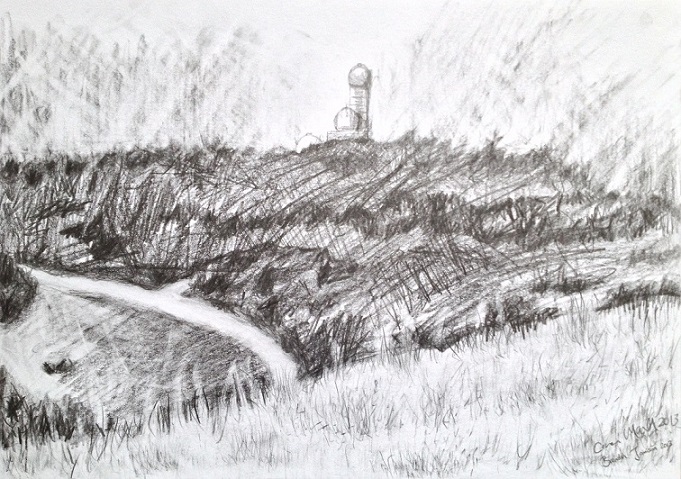
TEUFELSBERG FROM DRACHENBURG (2013) Brendan Jamison and Ciaran Magill, pencil on card, 42 x 59 cms. Photography: © Jamison Sculpture Studio
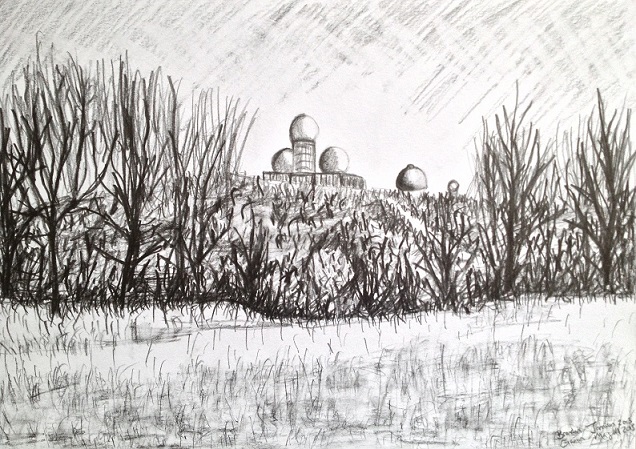
NORTH WEST APPROACH TO TEUFELSBERG (2013) Brendan Jamison and Ciaran Magill, pencil on card, 42 x 59 cms. Photography: © Jamison Sculpture Studio
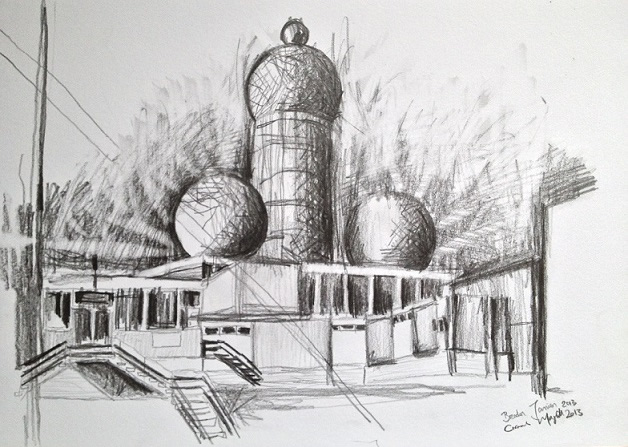
ENTRANCE TO TEUFELSBERG FIELD STATION BERLIN (2013) Brendan Jamison and Ciaran Magill, pencil on card, 42 x 59 cms. Photography: © Jamison Sculpture Studio
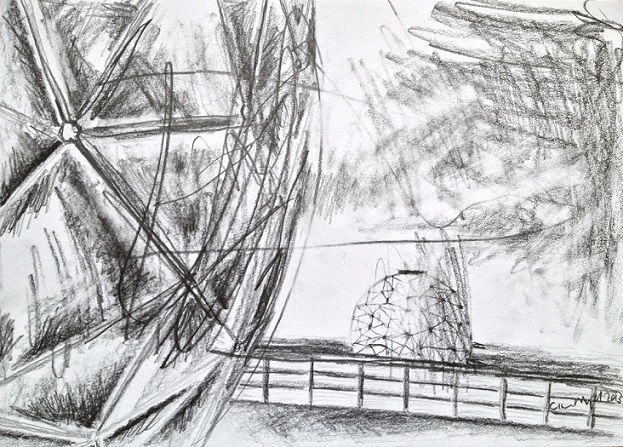
VIEW TOWARDS THE ARCTIC TOWER OF TEUFELSBERG FIELD STATION BERLIN (2013) Brendan Jamison and Ciaran Magill, pencil on card, 42 x 59 cms. Photography: © Jamison Sculpture Studio
CONSTRUCTING A RADOME
Location: Jamison Sculpture Studio, Belfast. July 2013
Design and construction: Professor Sean Miller, Brendan Jamison and David Turner
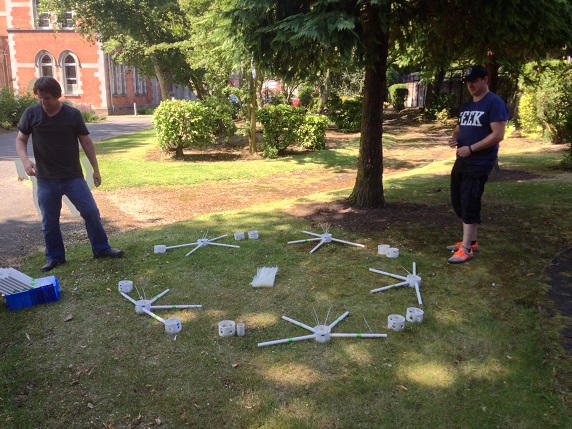
CONSTRUCTING A RADOME (2013) Sean Miller and David Turner on the lawn of Jamison Sculpture Studio, Belfast, Northern Ireland. July 2013. PVC rods, drilled pipes and cable ties. Photography: © Jamison Sculpture Studio
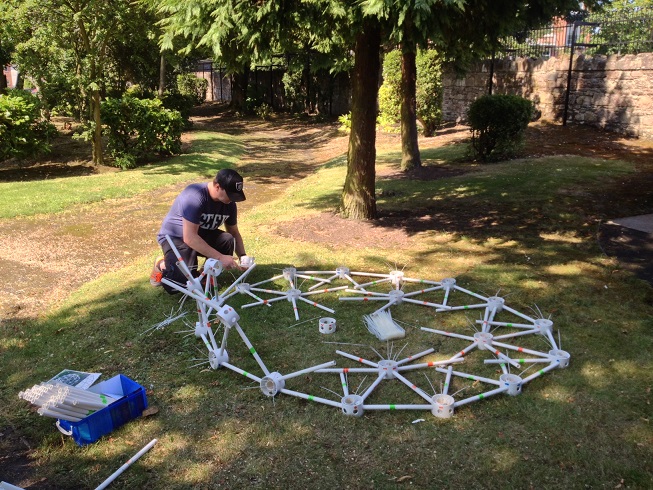
CONSTRUCTING A RADOME (2013) David Turner on the lawn of Jamison Sculpture Studio, Belfast, Northern Ireland. July 2013. PVC rods, drilled pipes and cable ties. Photography: © Jamison Sculpture Studio
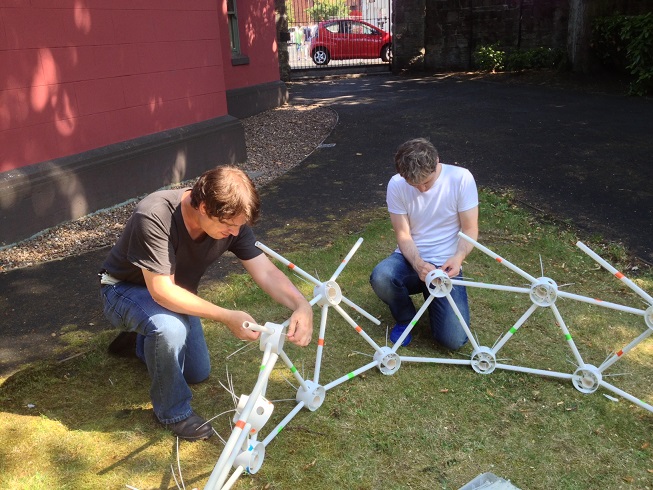
CONSTRUCTING A RADOME (2013) Sean Miller and Brendan Jamison on the lawn of Jamison Sculpture Studio, Belfast, Northern Ireland. July 2013. PVC rods, drilled pipes and cable ties. Photography: © Jamison Sculpture Studio

CONSTRUCTING A RADOME (2013) Brendan Jamison and Sean Miller on the lawn of Jamison Sculpture Studio, Belfast, Northern Ireland. July 2013. PVC rods, drilled pipes and cable ties. Photography: © Jamison Sculpture Studio
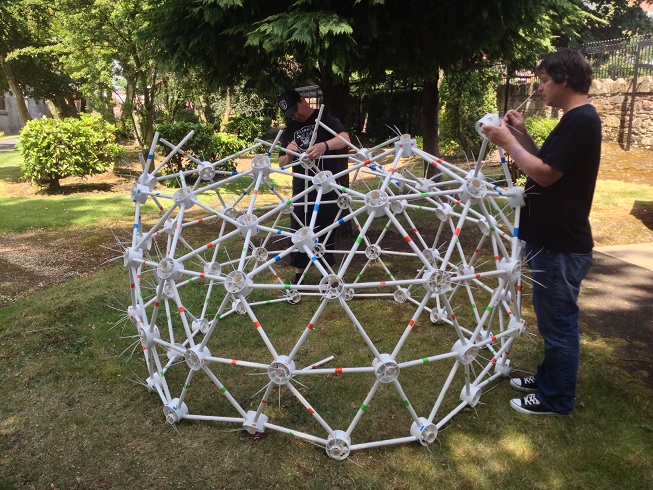
CONSTRUCTING A RADOME (2013) David Turner and Sean Miller on the lawn of Jamison Sculpture Studio, Belfast, Northern Ireland. July 2013. PVC rods, drilled pipes and cable ties. Photography: © Jamison Sculpture Studio
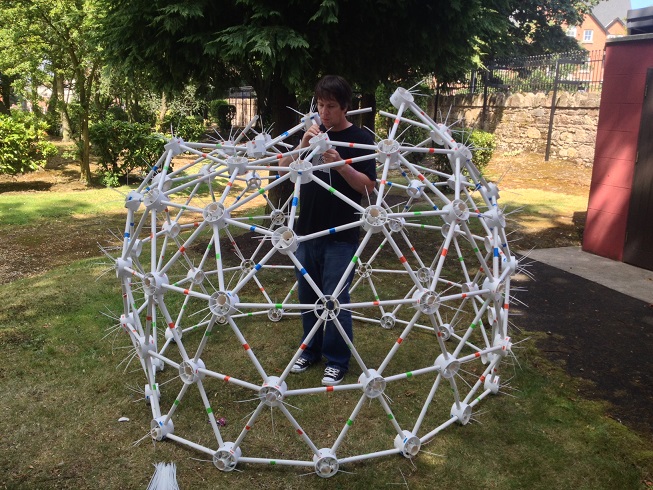
CONSTRUCTING A RADOME (2013) Sean Miller on the lawn of Jamison Sculpture Studio, Belfast, Northern Ireland. July 2013. PVC rods, drilled pipes and cable ties. Photography: © Jamison Sculpture Studio
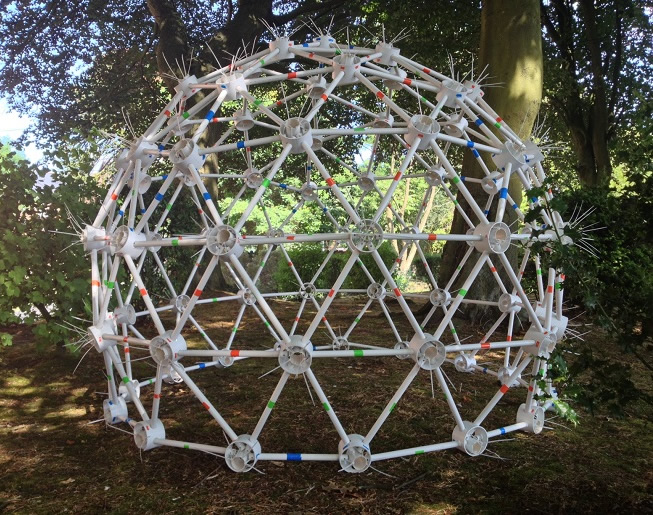
SKELETON OF A RADOME (2013) Sean Miller and Brendan Jamison. PVC rods, drilled pipes and cable ties. 180 x 190 x 190 cms. Jamison Sculpture Studio, Belfast, Northern Ireland. Contructed during July 2013. Photography: © Jamison Sculpture Studio
ARCHIVE PHOTOGRAPHY
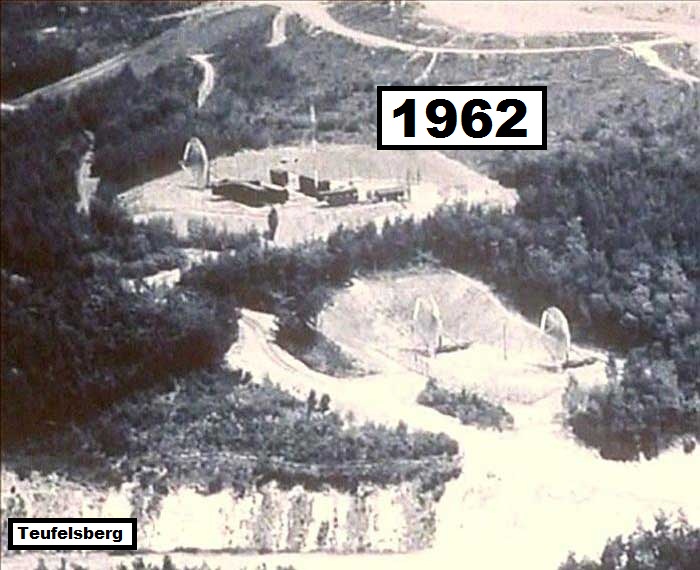
Teufelsberg: 1962
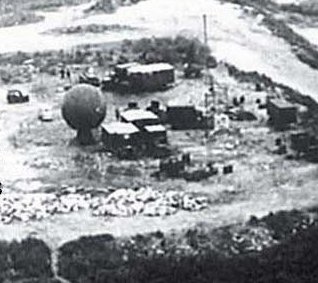
Teufelsberg: Early 1963
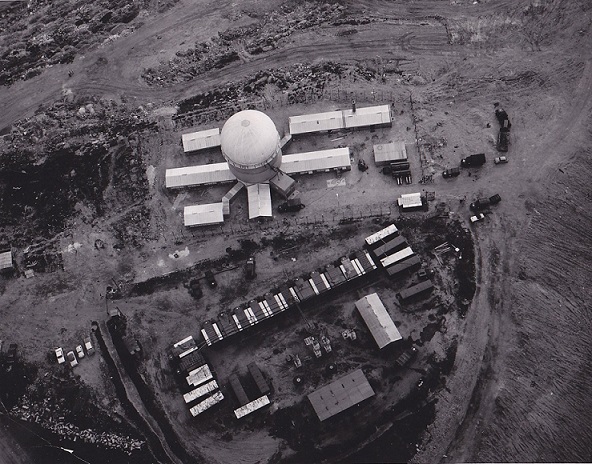
Teufelsberg: Late 1963
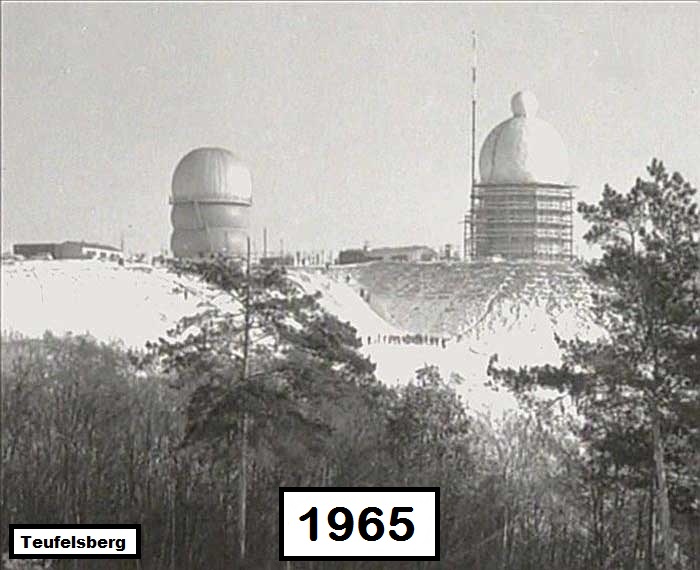
Teufelsberg: 1965 - Arctic Tower under construction
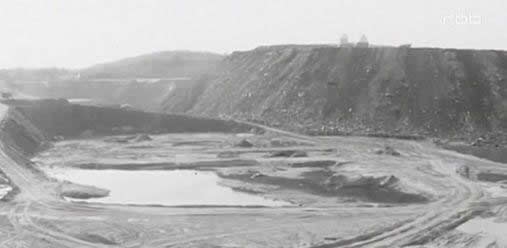
Teufelsberg: 1965.

Teufelsberg: 1966
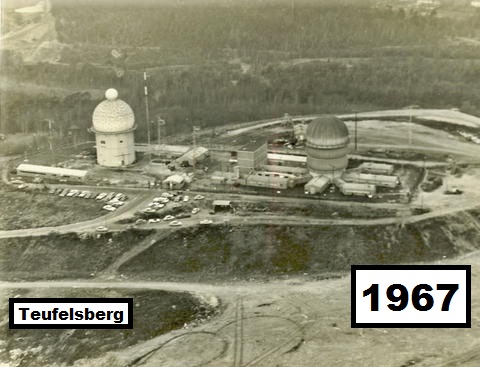
Teufelsberg: 1967

Teufelsberg. Circa 1970/1971: Contstruction of building #1458
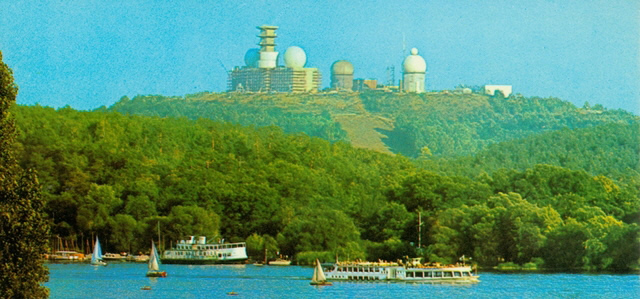
Teufelsberg. Circa 1970/1971: Contstruction of building #1458
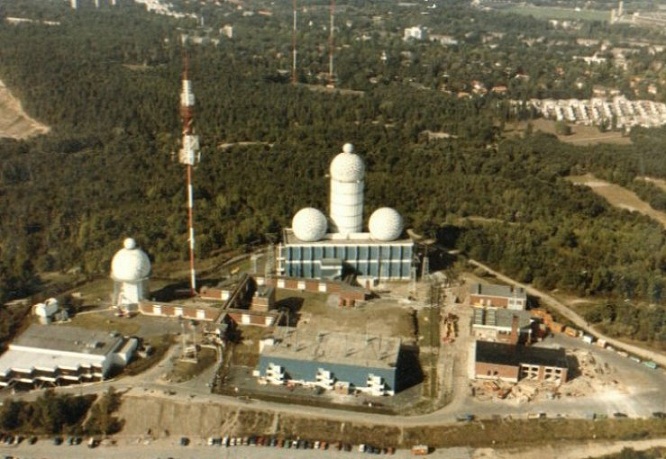
Circa 1975: archive view of Teufelsberg Field Station Berlin. There are now 4 radomes operating on the hill. Note the inter-connecting passageway between the radomes on building #1458. It was in 1975 that the zig-zag row of windows were built on top of the warehouse to create a mess hall (lower left of photograph)
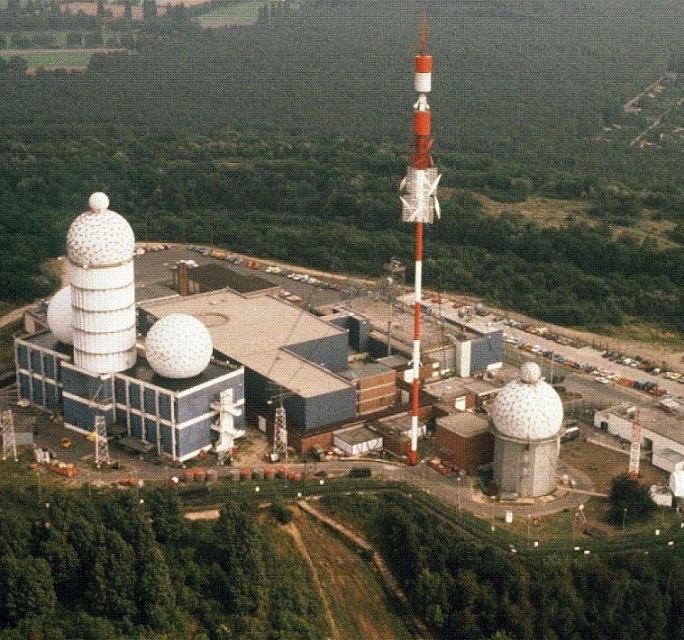
Circa 1976: archive view of Teufelsberg Field Station Berlin. Buildings #1458, #1475 and #1425.
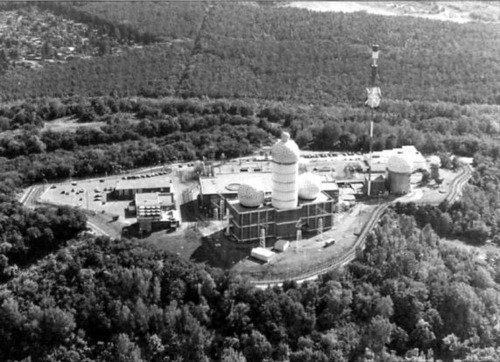
1977: Field Station Berlin: The Jambalaya Tower II (far right) becomes the 5th Radome on the hill.
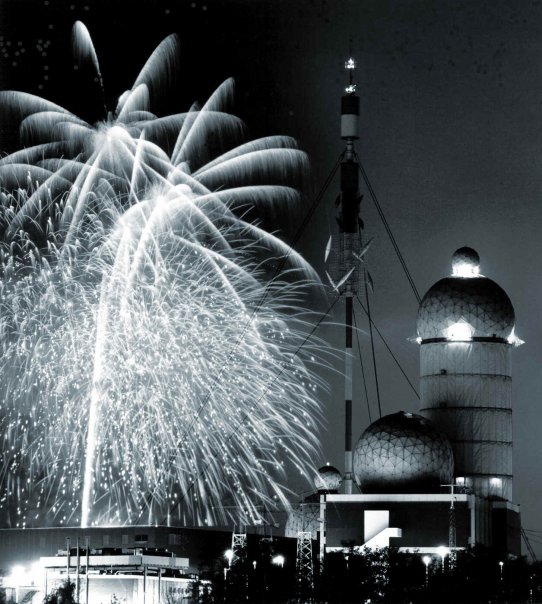
Teufelsberg: 1988 - Photography: Ronald F. Stark

Teufelsberg: Circa 1978
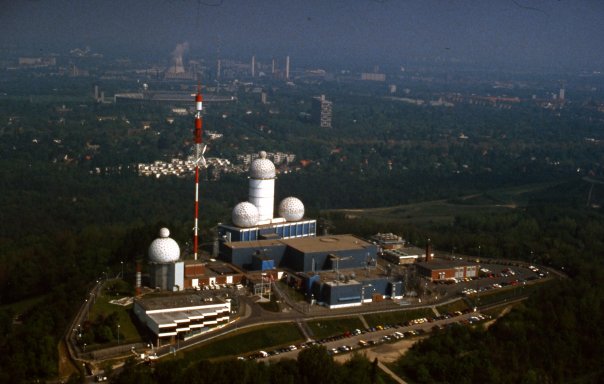
Teufelsberg on 5 May 1989 - Photography: Ronald F. Stark
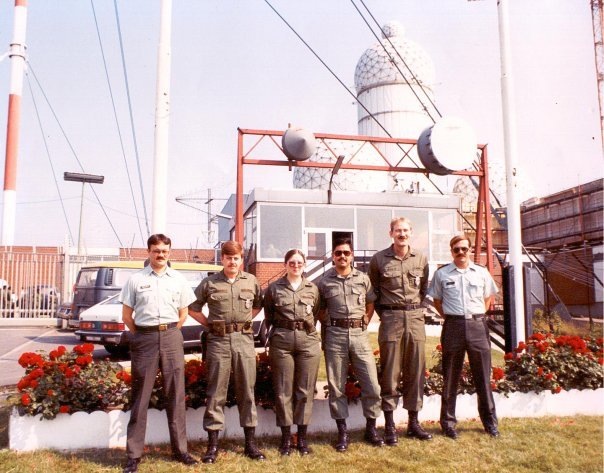
Teufelsberg: Circa 1979
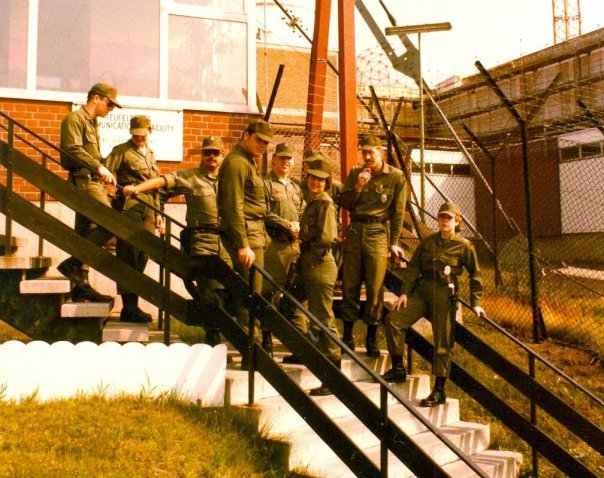
Teufelsberg: Circa 1980
|